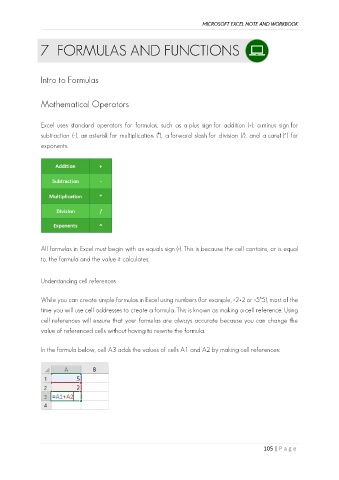Page 114 - Ms Excel Note and Workbook
P. 114
MICROSOFT EXCEL NOTE AND WORKBOOK
7 FORMULAS AND FUNCTIONS
Intro to Formulas
Mathematical Operators
Excel uses standard operators for formulas, such as a plus sign for addition (+), a minus sign for
subtraction (-), an asterisk for multiplication (*), a forward slash for division (/), and a caret (^) for
exponents.
All formulas in Excel must begin with an equals sign (=). This is because the cell contains, or is equal
to, the formula and the value it calculates.
Understanding cell references
While you can create simple formulas in Excel using numbers (for example, =2+2 or =5*5), most of the
time you will use cell addresses to create a formula. This is known as making a cell reference. Using
cell references will ensure that your formulas are always accurate because you can change the
value of referenced cells without having to rewrite the formula.
In the formula below, cell A3 adds the values of cells A1 and A2 by making cell references:
105 | P a g e

